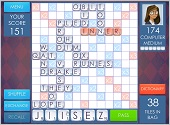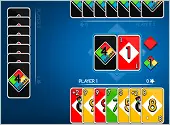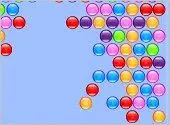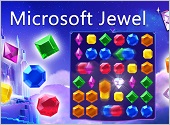- Home
- Better Memory
- Memory Systems
- Chunking
To Remember Long Numbers More Easily, Try Chunking Techniques
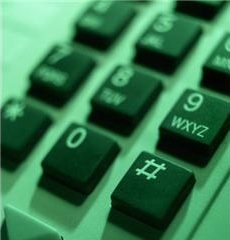
You can hold only a few items in mind at one time. This reflects the natural capacity of your short-term memory. However, by employing a memory technique called chunking, you can increase this limit significantly.
Chunking is especially helpful for remembering long sequences of numbers, such as phone and account numbers 10 to 12 digits long or more.
As I explain below, the Phonetic-Number technique is a powerful chunking method for permanently memorizing long numbers, while the simpler Direct Chunking method (using spaces or dashes) is useful for holding numbers in short-term memory temporarily - or more permanently with added repetition.
Short-term memory is the temporary memory storage you use when mentally working with information. For example, that phone number you want to keep in mind for a few moments, long enough to dial it. Or the topic of the conversation you're having right now with your friend. Or the next few steps of a project you're trying to complete.
By chunking - which means breaking long items into smaller, manageable chunks or pieces - you can expand your mind's natural 7-item limit.
If you enfold multiple, individual items into a single, larger item (chunk), you'll free extra slots in your short-term memory.
Numbers aren't the only items that can be chunked. In language, letter sequences are continuously chunked by your brain into words automatically.
You use language chunking all the time - you're doing it right now as you read these words - but you don't notice it. Suppose, however, I ask you to remember for a few moments the following sequence of 9 random letters:
R A I O L T A L G
You may not succeed, but give it a try anyway. Observe the mental strain involved as you attempt to hold this sequence in mind. This letter sequence doesn't form a word, so each letter must be recalled separately.
With concentration and repetition, you might be able to commit this random sequence to memory, temporarily. But it would require definite effort.

Struggling to remember a long, random sequence like this one is perfectly normal. In the 1950's, renowned cognitive psychologist Dr. George Miller discovered by experiment the average person can hold only 7 plus or minus 2 (i.e., 5 to 9) items in mind.
As Dr. Miller expressed it, when shown a list of random numbers, words, or letters, our short-term memory reaches its limit "somewhere in the neighborhood of seven."
Assuming you succeeded in temporarily memorizing the 9-letter sequence above, are you able to hold that sequence in mind as you continue read this? Now you're additionally asking your short-term memory to remember what your reading. That's a challenge.
Now for magic of chunking. Let's rearrange the same 9-letter sequence in a different order, and try it again:
ALLIGATOR
Boom! This rearrangement of the exact same 9 letters entered your short-term memory instantly. No effort required, because your brain chunked the letter sequence into a word concept. Amazing, if you think about it.
But we rarely need to remember a sequence of random letters. Random number sequences are another story. We encounter them all the time.
Chunking Numbers Is Especially Useful
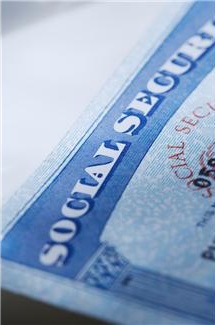
Chunking letters into words is automatic and easy due to language. What about long numbers, though? We don't speak in numbers. And we're constantly inundated by them. Short numbers, medium length, and even very long ones!
Phone numbers, passcodes, PIN numbers, lock combinations, credit and debit card numbers, bank account numbers, house numbers and ZIP codes, social security numbers, and other account numbers... the list goes on and on.
Remembering long numbers is where chunking is most valuable as a memory technique.
There are so many numbers, we're often forced to write them down or record them electronically in our smartphones or computers. But for commonly used numbers, it can be inconvenient to keep looking them up. And in many cases we definitely could use memory help when writing down a number someone is reading over the phone.
Clearly it would save time to memorize numbers we use most often, or at least the numbers we are expected to recall on demand such as home phone and cell phone numbers. And what about situations where we need to hold a very long number in short-term memory for several moments?
Chunking Method #1: Alphabetic Chunking of Numbers
In memory improvement circles, the Phonetic-Number technique is the go-to method for permanently memorizing long number sequences. With this technique, you use a letter-number chart to convert the number sequence into a word sentence. Then you commit the resulting silly sentence to memory.

The latter is a relatively easy task. Remembering the number 9412714154271 is hard. Remembering the silly phrase "Boy riding turtle wearing hat" is easy, especially if you visualize it (see image at right). They represent the same number.
The number sequence has been converted to letters which chunk into recognizable words that form a sentence.
This method leverages the letter-word chunking feature of memory we observed in the ALLIGATOR example above. For a detailed explanation on how to use this method, please visit my Phonetic-Number Technique page.
At first glance, the Phonetic-Number technique looks like it might be difficult to learn and use. But you can see from our example with ALLIGATOR how easy remembering random sequences can be if you assign them meaning. In effect, they become no longer random - at least as far as your memory is concerned.
With language, this happens automatically. We've internalized the alphabet and how letters are formed into words and concepts.
When we read, we don't examine the individual letters on the page - we simply see the words as "chunks". In fact, you can greatly increase your reading speed by learning to chunk phrases as you read, rather than reading one word at a time.
However, since we don't talk in numbers, memory aids such as the Phonetic-Number technique can be valuable for those with the need and willingness to learn them.
And thankfully, there is a quick and easy method of chunking for long numbers that does NOT require memorizing a letter-conversion chart. It's called direct chunking, using spacing or dashes.
Chunking Method #2: Direct Chunking with Dashes or Spaces

Suppose you don't want to invest the time to chunk a long number into memorable words or sentences. Or you only need to remember the number for a few moments, then forget it - as when writing down a phone number someone is telling you verbally.
In those situations, try direct chunking using dashes or spaces.
Direct chunking is already built in to many common numbers. That's why you usually see spaces or dashes in phone numbers, social security numbers, and credit card numbers. Here's a 10-digit phone number presented without any chunking:
5558675309
As you now know, ten digits is above the average capacity of short-term memory. So if someone quickly told you this number out loud, you might struggle to hold it in your short-term memory as you searched for pen and paper.
Here is the phone number again, with dash chunking:
555-867-5309
Now read the chunks slowly, as groups, 555... 867.... 5309. What we've done here is take a 10-item sequence and chunk it into 3 items of 4 or fewer each. Given the limits of short-term memory, holding these 3 chunks in mind is far easier than keeping the string of 10 in mind.
Limiting chunks to 7 numbers or less is the key to success. It would be much less helpful to chunk the phone number this way...
55586753-0-9
... because you'd need to hold a difficult 8-digit sequence in mind, plus the other two digits.
Try Chunking Your Next Long Number
The next time you're presented with a long number that might be useful to remember, try one of the two number chunking methods: the Phonetic-Number technique, or Direct Chunking using spaces or dashes.
To memorize a number permanently, the Phonetic-Number technique is the most effective. But you can also try direct chunking, followed by a lot of verbal repetition. Many people already do this instinctively, especially with phone numbers.
For situations where you're in a hurry or only need short-term mental storage, try direct chunking using spaces or dashes, with brief repetition. This should help you remember the number long enough to write it down, dial it, or tell it to someone else.
And when speaking a long number to someone else, be sure to chunk it for them and pause a few seconds between chunks. For example, don't say 9-8-7-8-6-4-7-1-0-0-7 quickly without stopping. Instead, say 987... 864... 710... 07.
Direct chunking is so simple you can start using it right away. Because a letter-number conversion chart must be memorized in advance, the Phonetic-Number technique requires practice. Both chunking methods are powerful in their own way.
I encourage you to make the effort to use memory-boosting strategies like the Phonetic-Number technique and Direct Chunking. These methods can reduce forgetfulness and stress in situations where you are expected to recall specific number sequences.
Published: 07/17/2014
Last Updated: 06/11/2020
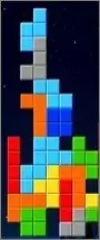
New / Popular
Multiplayer
Board Games
Card & Tile
Concentration
Math / Memory
Puzzles A-M
Puzzles N-Z
Time Mgmt
Word Games
- Retro Flash -
No sign-up or log-in needed. Just go to a game page and start playing! ![]()
100 Free Puzzle Printables:
Sudoku / Word Search

